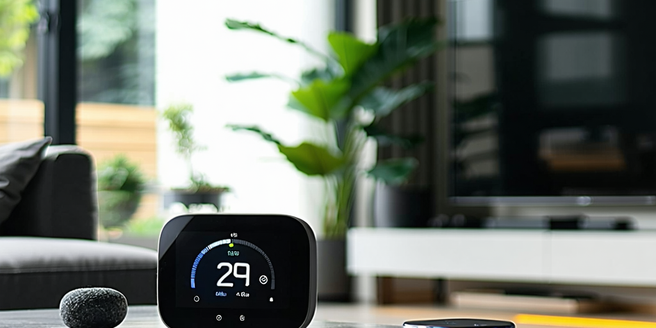Smart Home Tech And Accessibility

Understanding Smart Home Technology Basics
Smart home technology, often called home automation, refers to the use of internet-connected devices to enable the remote management and monitoring of systems and appliances in a home. These systems often include lighting, heating, air conditioning, and security systems. Central to smart home technology is the ability to integrate devices and manage them through a single platform or application, enhancing the convenience and efficiency of daily life. By using sensors, smart hubs, and wireless connectivity, homeowners can automate routine tasks and improve their home environment. Understanding these basics is essential for anyone looking to capitalize on the benefits of a smart home, fostering both energy efficiency and security. As technology advances, more affordable and user-friendly options are becoming accessible, broadening the appeal and usability of smart home systems to a wider audience.
How Smart Home Tech Enhances Accessibility
Smart home technology is a transformative tool for people with disabilities, offering enhanced independence and control over their home environment. Voice-activated systems, such as smart speakers and voice assistants, enable users to control lights, locks, thermostats, and other appliances without physical effort. This hands-free interaction is revolutionary, especially for those with mobility challenges. Additionally, smart sensors and automated responses can notify caregivers of an unusual event, providing an extra layer of security. Integration of video doorbells and cameras also allows for better remote monitoring. By removing physical barriers, smart home technology offers more than just convenience; it opens up possibilities for greater accessibility, improving the quality of life for individuals with various needs and fostering an inclusive environment that empowers users. This inclusion ultimately enhances personal independence and daily comfort.
Top Smart Devices for Improved Home Access
Equipping a home with smart devices can significantly enhance accessibility, providing users with various convenient options. Smart lights, for instance, can be controlled using voice commands or scheduled to turn on/off automatically, ensuring well-lit environments without manual switches. Smart locks offer keyless entry, which can be accessed via smartphone or biometrics, streamlining home access for users with physical limitations. Video doorbells with real-time video feeds improve home security and allow users to interact with visitors remotely. Smart thermostats adjust temperatures based on user preferences, optimizing home comfort efficiently. Beyond these, implementing smart plugs and routines can automate tasks like turning appliances on/off, minimizing physical tasks. These devices not only simplify home interactions but also cater to diverse needs, providing enhanced accessibility for all homeowners.
Adapting Smart Home Features for Various Needs
Smart home technology offers versatile capabilities that can be adapted to meet the diverse needs of its users. For individuals with mobility challenges, features like automated door locks and smart lighting controlled through voice commands or mobile apps offer significant convenience. Additionally, voice-activated assistants can set reminders, make calls, or even control entertainment systems, making everyday tasks more manageable. Smart sensors paired with customizable alerts can be tailored to provide safety notifications, such as alerting caregivers if an individual leaves home unexpectedly. These adaptable features are vital for individuals needing personalized solutions, ensuring that technology accommodates rather than dictates user lifestyles. By customizing features based on individual preferences and needs, smart home technology can enhance daily life, promoting independence and security for a wide range of users.
Benefits of Voice-Controlled Home Systems
Voice-controlled home systems have become a cornerstone of smart home accessibility, providing users the ability to manage their environment using simple vocal commands. This technology has empowered those with physical disabilities, eliminating the need for traditional manual controls and offering seamless interaction with home devices. Voice commands can initiate tasks such as adjusting lighting, controlling the thermostat, managing media devices, or locking doors, enhancing accessibility and convenience. The intuitive nature of voice control reduces the barriers associated with complex interfaces, making it especially beneficial for those with visual impairments or limited dexterity. Furthermore, integrating these systems with other smart home solutions enhances automation, enabling customized routines and hands-free operations. Overall, voice-controlled systems are a key benefit for making homes more accessible and user-friendly.
Future Trends in Smart Home Accessibility
The future of smart home accessibility is promising, with innovations focusing on inclusivity and personalized user experiences. Key trends include advancements in artificial intelligence, allowing devices to anticipate needs and adapt to the individual user’s behavior. Enhanced machine learning algorithms will provide predictive analytics for energy efficiency and security, creating a more responsive home environment. Wearable devices integrated with smart home systems will offer even greater control, making home management convenient and intuitive. Furthermore, the development of open-source platforms ensures compatibility across various devices, expanding accessibility. Advances in augmented reality may also be incorporated to assist with navigation and control within the home, providing a transformative accessibility experience. As technology evolves, smart homes will increasingly support independent living, catering to diverse needs and priorities for a holistic, accessible future.